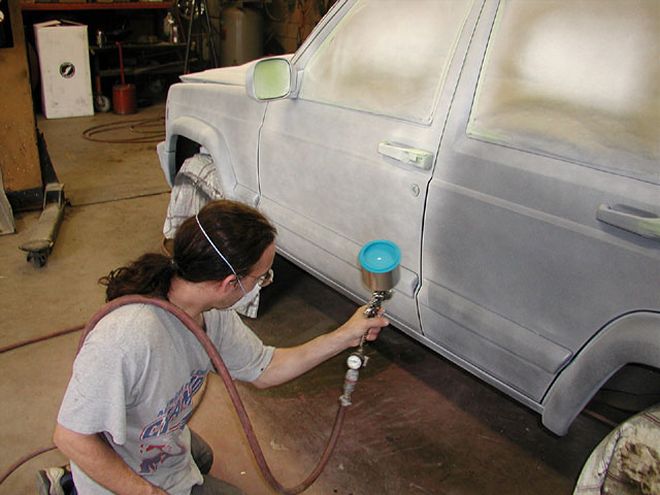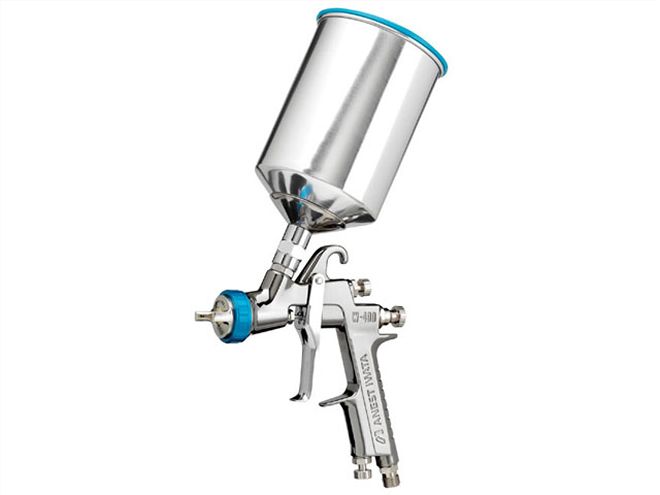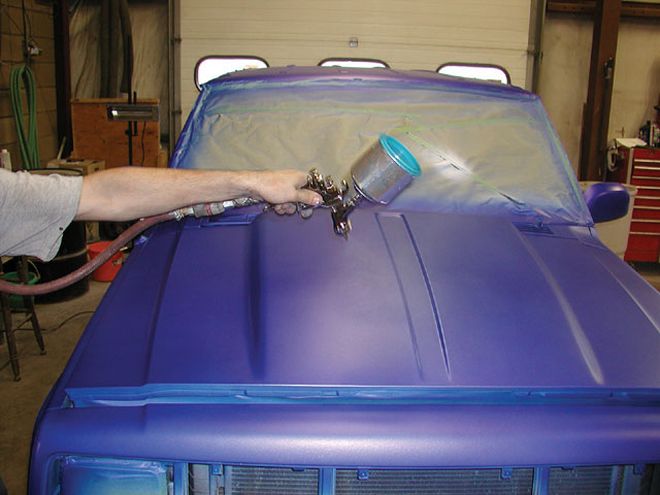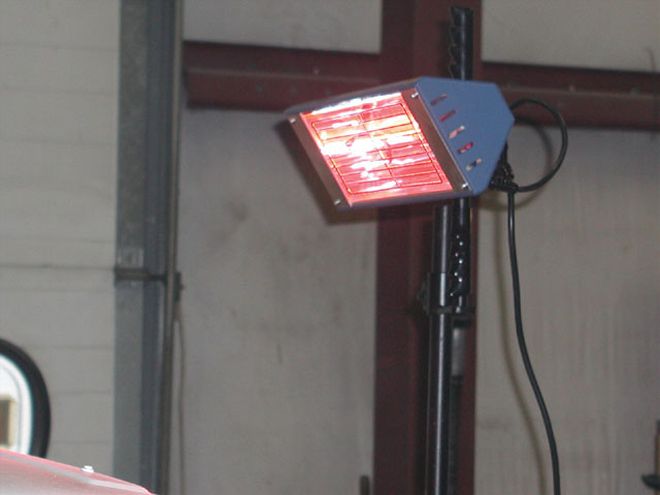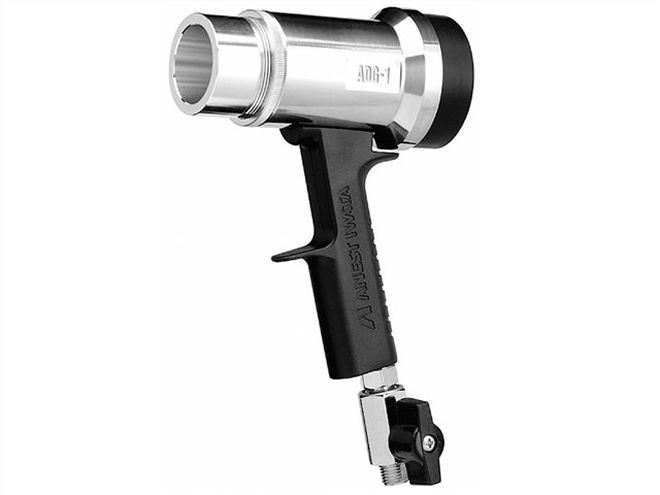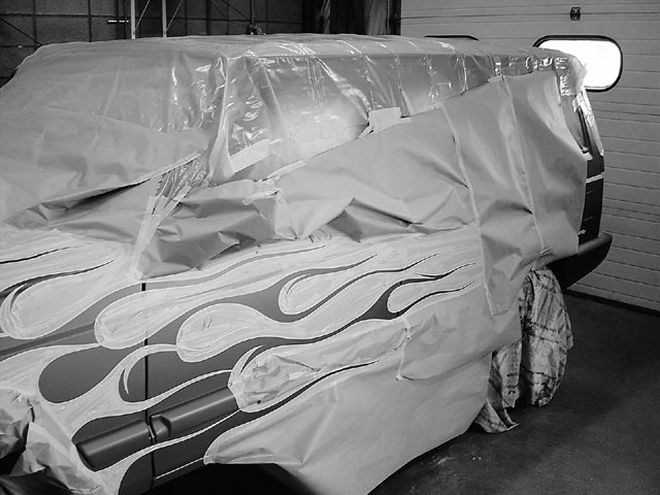The future of automotive paints is changing. Environmental concerns have helped fuel the drive toward water-based basecoat paints. Over the past few years, technology for water-based products has been one of the main focuses in the paint and coating industry.
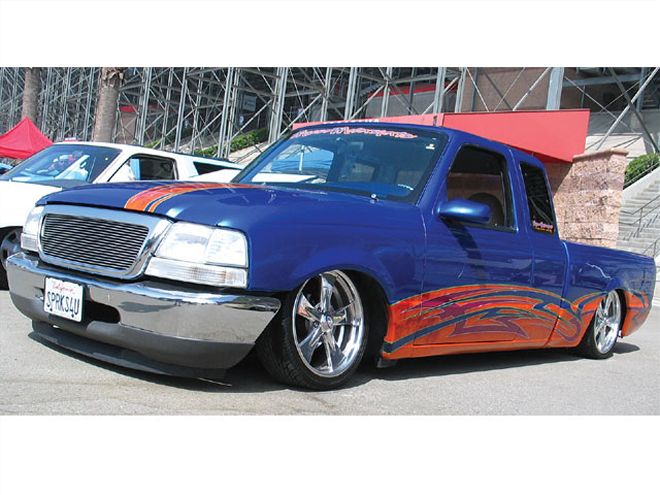
| automotive Paints ford Ranger
Although water-based auto paints have been around since the '80s, the quality and performance of water-based paints have made great leaps in recent years. New types of pigments, chemicals, and additives allow water-based paints to perform as never before.
Many of the popular colors and special effects once only available in solvent-based paints can now be found in water-based paints. Also, water-based binders are extremely clear, allowing for bright and vibrant finishes. Additives and chemicals have also advanced, allowing water-based paints to self-level and dry to an even finish, eliminating "orange-peel" effects.
Water-based binders polymerize when cured, aka cross-link, causing a durable film to form, allowing for better taping, sanding, and other techniques that were difficult with earlier-generation water-based paints. Water-base basecoats offer many performance advantages: Compatibility with most any urethane, virtually no time windows, they're non-flammable, offer easy clean up, and have no VOC concerns.
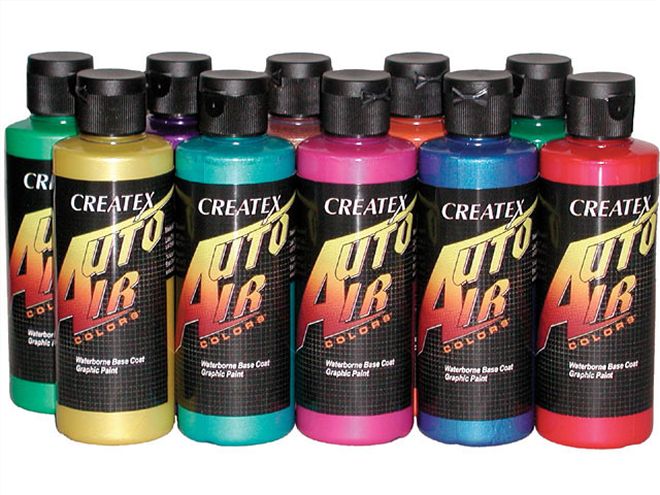
| automotive Paints auto Air Colors
Auto manufacturers such as Ford and DaimlerChrysler have been using water-based basecoat paints at select foreign paint shops for several years and have plans to make all of their paint shops water-based facilities within the next few years. The replacement of solvent-based paints with water-based paints has resulted in a reduction of their volatile emissions, while improving the finish quality.
The switch to water-based basecoats also changes the technology and practices involved with automotive painting. Spray gun manufacturers have begun to develop water-based versions of their popular HVLP guns. By drilling the nozzle cap to allow for more airflow and adjusting the settings sizes, the heavier water-based paints are allowed to atomize as finely as solvent-based paints. Air dryers and infrared lamps are being used more frequently and are being developed to compensate for the extended curing time that water-based paints have in comparison with solvent-based paint.
The change to water-based paints is happening now. Environmental concerns have pushed technology within the paint and coatings industry to develop water-based paints that produce beautiful, professional, and long-lasting finishes.
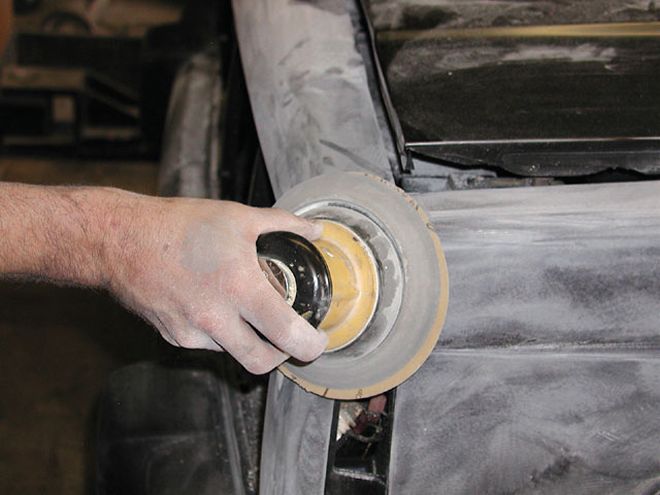
| automotive Paints sanding
1.As when using any paint, attention to detail is an essential part of the preparation. Thorough scuffing and sanding is required to ensure proper adhesion, and attention must be paid to the gloss or the surface being painted. Primers, such as the types commonly found on aftermarket parts, must be removed prior to painting as these primers are often slick and contain silicates, which water-based (WB) paints will not adhere to. When painting plastic parts, especially used parts that have been waxed, an adhesion promoter should be used as the silicates used in the wax may prevent the paint from properly adhering to the plastic.
Auto Air Colors Q&A Q - What are Auto Air Colors?
A - Auto Air Colors are water-based-type automotive paints that are used as a basecoat; they still require the use of a typical urethane clearcoat.
Q - What are the most important things to know when working with Auto Air Colors?
A - Most important is working in light coats. Being water-based, excess water evaporates from the paint as it dries. Working in light coats ensures that all the excess water is wicked from the paint and that the colors will dry thoroughly. It is also important to make sure the air source is free of any oil contaminates. Oil and water do not mix and this will cause a "fish eye" effect, especially when the clear is applied. The heat-curing process is also very important.
Q - What are Auto Air Colors made of?
A - Auto Air Colors consist of two essential components: a binder and a pigment. The binder is an advanced water-based, non-toxic polymer designed specifically for automotive applications. The pigments used are the same found in OE and aftermarket coatings.
Q - Will paintjobs done with water-base last?
A - Yes, because of the quality and grade of the pigments used, Auto Air Colors will last just as long as any other paint. The binder is a hard, film-forming polymer that has greater impact resistance than a urethane, making it less likely to chip, crack, or flake.
Q - What can they be used on?
A - Auto Air Colors can be used for the entire vehicle or for graphics applied to the finish. The colors work on metal, aluminum, fiberglass, carbon, plastics, and other non-porous surfaces. They can also be applied to prepared urethane and lacquer finishes.
Q - What is unique about the Auto Air Colors?
A - Auto Air Colors will cross-link when cured with heat, similar to a urethane catalyzing. The application of heat to the color when it is drying or soon after it has dried, creates a reaction inside the color in which the individual acrylic-polymer strands link up with one another to create a strong, uniform mesh.
Q - What are the advantages of using water-base compared with urethane paints?
A - Auto Air Colors are the new technology in automotive basecoat paints. The system used is simple, straightforward, and eliminates many problems encountered when using urethanes.
Q - What type of clears are compatible with Auto Air Colors?
A - Any urethane or polyurethane clear will work excellently. Auto Air Colors are porous, which means the clear will absorb into the paint and create a deep grip. Urethane clears are totally compatible with Auto Air Colors and won't de-laminate or peel.
Q - How does the heat-cure process work, and is it always necessary?
A - The heat-curing process is recommended, but not always necessary. We recommend that the colors be cured with heat prior to masking or clearcoating. The heat causes the binder to cross-link, which means it has set and is cured. Simply exposing the colors to heat with the use of a heat gun or heat lamp, or just leaving the colors in the sun on a hot day, will work. The heat does not have to be excessive and will only take a few minutes to dry the paint.
Q - How do climate or shop conditions affect the Auto Air Colors?
A - Auto Air Colors are best used in a dry and warm environment. Since they contain water, any condition that will slow water from evaporating, such as humidity or a colder environment, will increase dry time, but that's where a heat source comes in.
Q - How would I clean my basecoat right before I shoot the clear?
A - To remove any dust prior to applying clear, a mild solvent-based degreaser can be used, such as DuPont's 3091S Final Kleen.
Water-Base Pros -No harsh chemicals are needed to clean your equipment; water will do.
-Auto Air Colors are non-toxic and may be used at home.
-They are ready to spray out of the bottle; no reduction is required.
-They are compatible and more economical than urethanes.
-There are no time windows, including application time windows for the clear coats, and do not need an inter-coat of clear, even with the Candy Colors or when applying mural work. They also blend incredibly well.
-They have excellent cover and require much less materials to get the same effect.
-They work over any automotive primer, except OE black.
 | automotive Paints ford Ranger
Although water-based auto paints have been around since the '80s, the quality and performance of water-based paints have made great leaps in recent years. New types of pigments, chemicals, and additives allow water-based paints to perform as never before.
Many of the popular colors and special effects once only available in solvent-based paints can now be found in water-based paints. Also, water-based binders are extremely clear, allowing for bright and vibrant finishes. Additives and chemicals have also advanced, allowing water-based paints to self-level and dry to an even finish, eliminating "orange-peel" effects.
Water-based binders polymerize when cured, aka cross-link, causing a durable film to form, allowing for better taping, sanding, and other techniques that were difficult with earlier-generation water-based paints. Water-base basecoats offer many performance advantages: Compatibility with most any urethane, virtually no time windows, they're non-flammable, offer easy clean up, and have no VOC concerns.
| automotive Paints ford Ranger
Although water-based auto paints have been around since the '80s, the quality and performance of water-based paints have made great leaps in recent years. New types of pigments, chemicals, and additives allow water-based paints to perform as never before.
Many of the popular colors and special effects once only available in solvent-based paints can now be found in water-based paints. Also, water-based binders are extremely clear, allowing for bright and vibrant finishes. Additives and chemicals have also advanced, allowing water-based paints to self-level and dry to an even finish, eliminating "orange-peel" effects.
Water-based binders polymerize when cured, aka cross-link, causing a durable film to form, allowing for better taping, sanding, and other techniques that were difficult with earlier-generation water-based paints. Water-base basecoats offer many performance advantages: Compatibility with most any urethane, virtually no time windows, they're non-flammable, offer easy clean up, and have no VOC concerns.
 | automotive Paints auto Air Colors
Auto manufacturers such as Ford and DaimlerChrysler have been using water-based basecoat paints at select foreign paint shops for several years and have plans to make all of their paint shops water-based facilities within the next few years. The replacement of solvent-based paints with water-based paints has resulted in a reduction of their volatile emissions, while improving the finish quality.
The switch to water-based basecoats also changes the technology and practices involved with automotive painting. Spray gun manufacturers have begun to develop water-based versions of their popular HVLP guns. By drilling the nozzle cap to allow for more airflow and adjusting the settings sizes, the heavier water-based paints are allowed to atomize as finely as solvent-based paints. Air dryers and infrared lamps are being used more frequently and are being developed to compensate for the extended curing time that water-based paints have in comparison with solvent-based paint.
The change to water-based paints is happening now. Environmental concerns have pushed technology within the paint and coatings industry to develop water-based paints that produce beautiful, professional, and long-lasting finishes.
| automotive Paints auto Air Colors
Auto manufacturers such as Ford and DaimlerChrysler have been using water-based basecoat paints at select foreign paint shops for several years and have plans to make all of their paint shops water-based facilities within the next few years. The replacement of solvent-based paints with water-based paints has resulted in a reduction of their volatile emissions, while improving the finish quality.
The switch to water-based basecoats also changes the technology and practices involved with automotive painting. Spray gun manufacturers have begun to develop water-based versions of their popular HVLP guns. By drilling the nozzle cap to allow for more airflow and adjusting the settings sizes, the heavier water-based paints are allowed to atomize as finely as solvent-based paints. Air dryers and infrared lamps are being used more frequently and are being developed to compensate for the extended curing time that water-based paints have in comparison with solvent-based paint.
The change to water-based paints is happening now. Environmental concerns have pushed technology within the paint and coatings industry to develop water-based paints that produce beautiful, professional, and long-lasting finishes.
 | automotive Paints sanding
1.As when using any paint, attention to detail is an essential part of the preparation. Thorough scuffing and sanding is required to ensure proper adhesion, and attention must be paid to the gloss or the surface being painted. Primers, such as the types commonly found on aftermarket parts, must be removed prior to painting as these primers are often slick and contain silicates, which water-based (WB) paints will not adhere to. When painting plastic parts, especially used parts that have been waxed, an adhesion promoter should be used as the silicates used in the wax may prevent the paint from properly adhering to the plastic.
| automotive Paints sanding
1.As when using any paint, attention to detail is an essential part of the preparation. Thorough scuffing and sanding is required to ensure proper adhesion, and attention must be paid to the gloss or the surface being painted. Primers, such as the types commonly found on aftermarket parts, must be removed prior to painting as these primers are often slick and contain silicates, which water-based (WB) paints will not adhere to. When painting plastic parts, especially used parts that have been waxed, an adhesion promoter should be used as the silicates used in the wax may prevent the paint from properly adhering to the plastic.
